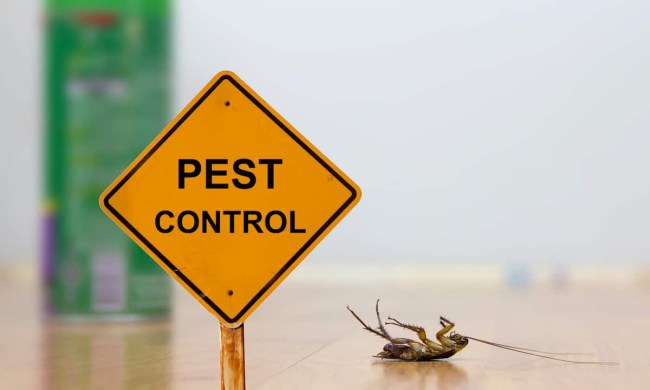With a New Year comes a promise to eat healthier for fitness and well-being. But, half the battle of healthy eating is knowing what to buy. So how do you shop for healthy food? It goes beyond merely limiting the amount of processed and sugary foods on your grocery list and favoring fresh fruits and veggies, lean proteins, and whole grains. It’s about having a shopping plan and sticking to it. It’s about finding inventive new ways to eat common foods, and elevating your tried-and-true recipes to make your family actually enjoy eating their vegetables.
As with everything else in life, it starts at the beginning, and the beginning is making the right buying choices. After all, the key to eating right is your trip to the grocery store. Follow this handy guide for ensuring you have a healthy food grocery list.
Small changes can make a big difference
Have a plan ahead of time
Make a list before leaving home and try to stick to it. Of course, there will be the occasional sale item or a great deal you can’t pass up, but for the most part, you should know what you are going into the store to buy. Even better, shop to a pre-set meal plan for the week, so you won’t need to run out to the store for some forgotten ingredient.
Don’t shop every aisle
Avoid grocery store layout traps. Most grocery stores are laid out in such a way that you need to travel through the “bad aisles” to get from produce (where you want to really load up) to the dairy section (where you’ll find good sources of calcium and protein). Don’t fall into the trap of going up and down each aisle, grabbing impulse items that aren’t a part of your weekly meal plan.
Know how to read labels
Get used to reading labels, and understanding what you should and shouldn’t be eating. Look for higher fiber and protein levels and lower sugar and carbohydrates.
Look for higher-quality foods
Make smarter choices, such as choosing regular oatmeal over instant oatmeal. When choosing a whole-grain cereal, look for those with at least 4 grams of fiber per serving and lower amounts of sugar — in fact, the less sugar the better. Choose nonfat or low-fat yogurt rather than the regular kind, and if possible, choose Greek yogurt for its higher protein content.
5 steps to healthy grocery shopping
In order to eat healthy foods, you need to start with a healthy shopping list. Go into the store with a list of items you want or need, rather than wandering around the store and being at the mercy of careful staging and marketing ploys. Replenish foods, and don’t buy too many perishable items, which you might end up tossing before having the chance to even eat them.
In terms of navigating the store, use these easy-to-follow guidelines to make sure you always have healthy eating staples on your grocery list:
1. Spend the largest amount of your shopping time in the produce section. Select a colorful assortment of fruits and vegetables, as the rainbow of colors reflects the different vitamin, mineral, and phytonutrient content in each fruit or vegetable.
2. When shopping for breads, cereals, and pasta, aim for whole-grain varieties whenever possible and do your best to avoid highly processed and bleached products.
- Although you may think that granola is a healthy food choice, even the low-fat varieties tend to have more fat and sugar than other cereals.
- Bread, pasta, rice, and grains offer excellent opportunities to add whole grains into your diet, so choose wisely. Always opt for whole-wheat bread and pastas, brown rice, grain mixes, quinoa, bulgur, and barley.
3. Protein is important, but make sure it’s the right protein. The American Heart Association recommends having two servings of fish per week, and many doctors recommend salmon because it is also a good source of omega-3 fatty acids. When selecting other meats, be sure to choose lean cuts, such as round, top sirloin, and tenderloin; opt for skinless poultry; and as always, watch your portion sizes.
4. Dairy foods are an excellent source of bone-building calcium and vitamin D — you just need to watch your fat content. Luckily, there are many low-fat and nonfat varieties that will ensure you get your recommended three servings per day, without overdoing it in the fat category. Of course, it’s OK to indulge in higher-fat cheeses from time to time, but just be mindful of portion control when you do.
5. Frozen and canned foods, while not optimal, do have some nutritional benefits. For example, frozen fruits and vegetables (without sauce) can be an excellent way to fill in produce gaps during the winter months. Always keep a variety of canned beans on hand for tossing into salads, soups, pastas, or rice dishes. If you must used canned fruits or vegetables, choose fruits packed in 100 percent juice and veggies with no added salt. Tuna, packed in water, as well as low-fat, low-sodium soups are also acceptable to have available for quick meals. In addition, every healthy pantry should include olive and canola oils, nut butters, mustard, and assorted vinegars.
Healthy eating begins with healthy shopping, and we hope that our little guide helps to put you on the path to much better choices at the grocery store. It’s easy to make simple swaps and alterations that can have a big impact on your health and on your waistline.





